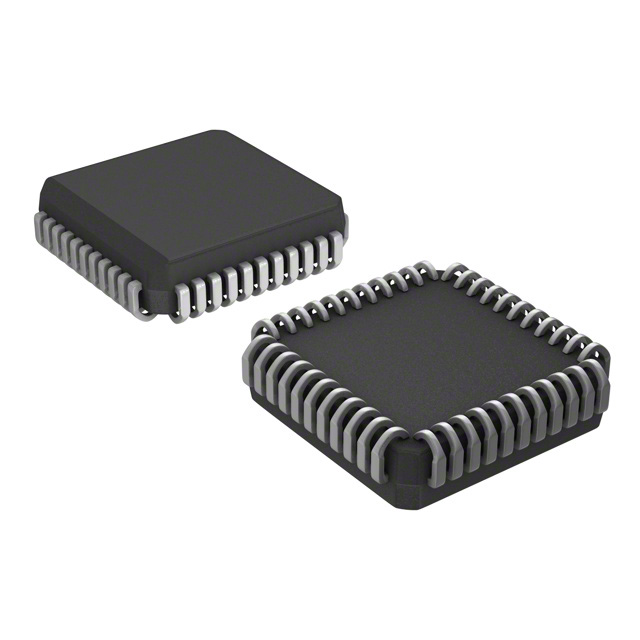Consulte las especificaciones para obtener detalles del producto.

PIC16C74A-10/L
Product Overview
Category
The PIC16C74A-10/L belongs to the category of microcontrollers.
Use
This microcontroller is commonly used in various electronic applications that require embedded control and processing capabilities.
Characteristics
- Low power consumption
- High-performance RISC architecture
- Wide operating voltage range
- On-chip program memory
- Multiple I/O ports
- Timer modules for precise timing operations
Package
The PIC16C74A-10/L is available in a 40-pin PDIP (Plastic Dual Inline Package) package.
Essence
The essence of the PIC16C74A-10/L lies in its ability to provide efficient and reliable control and processing capabilities in a compact form factor.
Packaging/Quantity
The PIC16C74A-10/L is typically packaged in reels or tubes, with each reel containing a specific quantity of microcontrollers. The exact quantity may vary depending on the manufacturer's specifications.
Specifications
- Operating Voltage: 2.0V to 5.5V
- Maximum Clock Frequency: 10 MHz
- Program Memory Size: 4 KB
- RAM Size: 192 bytes
- Number of I/O Pins: 33
- ADC Channels: 8
- Timers: 3
Detailed Pin Configuration
The PIC16C74A-10/L features a total of 40 pins, each serving a specific purpose. The pin configuration is as follows:
- VDD - Power supply voltage
- RA0 - General-purpose I/O pin
- RA1 - General-purpose I/O pin
- RA2 - General-purpose I/O pin
- RA3 - General-purpose I/O pin
- RA4 - General-purpose I/O pin
- RA5 - General-purpose I/O pin
- MCLR - Master Clear input
- VSS - Ground
- OSC1 - Oscillator input
- OSC2 - Oscillator output
- RC0 - General-purpose I/O pin
- RC1 - General-purpose I/O pin
- RC2 - General-purpose I/O pin
- RC3 - General-purpose I/O pin
- RC4 - General-purpose I/O pin
- RC5 - General-purpose I/O pin
- RB0 - General-purpose I/O pin
- RB1 - General-purpose I/O pin
- RB2 - General-purpose I/O pin
- RB3 - General-purpose I/O pin
- RB4 - General-purpose I/O pin
- RB5 - General-purpose I/O pin
- RB6 - General-purpose I/O pin
- RB7 - General-purpose I/O pin
- VDD - Power supply voltage
- VSS - Ground
- RD0 - General-purpose I/O pin
- RD1 - General-purpose I/O pin
- RD2 - General-purpose I/O pin
- RD3 - General-purpose I/O pin
- RD4 - General-purpose I/O pin
- RD5 - General-purpose I/O pin
- RD6 - General-purpose I/O pin
- RD7 - General-purpose I/O pin
- VPP - Programming voltage
- PGM - Programming mode select
- PGD - Programming data
- PGC - Programming clock
- VSS - Ground
Functional Features
The PIC16C74A-10/L offers several functional features that enhance its usability and performance:
- High-performance RISC architecture allows for efficient execution of instructions.
- On-chip program memory enables the storage of user-defined code.
- Multiple I/O ports provide flexibility for interfacing with external devices.
- Timer modules allow precise timing operations, essential for time-sensitive applications.
- Low power consumption ensures energy efficiency and longer battery life.
Advantages and Disadvantages
Advantages
- Compact size and low power consumption make it suitable for portable and battery-powered applications.
- High-performance RISC architecture enables fast and efficient execution of instructions.
- Wide operating voltage range allows for compatibility with various power sources.
- On-chip program memory eliminates the need for external memory components, reducing cost and complexity.
Disadvantages
- Limited program memory size may restrict the complexity of applications that can be implemented.
- The number of I/O pins may be insufficient for certain projects requiring extensive interfacing with external devices.
- Lack of built-in communication interfaces may require additional components for connectivity.
Working Principles
The PIC16C74A-10/L operates based on the principles of a microcontroller. It executes instructions stored in its program memory to perform specific tasks. The central processing unit (CPU) fetches instructions, decodes them, and executes the corresponding operations
Enumere 10 preguntas y respuestas comunes relacionadas con la aplicación de PIC16C74A-10/L en soluciones técnicas
What is the maximum operating frequency of PIC16C74A-10/L?
- The maximum operating frequency of PIC16C74A-10/L is 10 MHz.How many I/O pins does PIC16C74A-10/L have?
- PIC16C74A-10/L has a total of 33 I/O pins.What is the program memory size of PIC16C74A-10/L?
- The program memory size of PIC16C74A-10/L is 4 KB.Can PIC16C74A-10/L be used for analog signal processing?
- Yes, PIC16C74A-10/L features analog-to-digital conversion capabilities for analog signal processing.What are the communication interfaces supported by PIC16C74A-10/L?
- PIC16C74A-10/L supports USART and SPI communication interfaces.Is PIC16C74A-10/L suitable for battery-powered applications?
- Yes, PIC16C74A-10/L's low power consumption makes it suitable for battery-powered applications.Does PIC16C74A-10/L have built-in timers?
- Yes, PIC16C74A-10/L includes multiple built-in timers for various timing functions.Can PIC16C74A-10/L be programmed in-circuit?
- Yes, PIC16C74A-10/L supports in-circuit programming for convenient firmware updates.What voltage levels does PIC16C74A-10/L support?
- PIC16C74A-10/L operates at a voltage range of 2.0V to 5.5V.Are there any development tools available for PIC16C74A-10/L?
- Yes, Microchip provides development tools such as MPLAB IDE and PICkit programmers for PIC16C74A-10/L.

